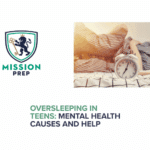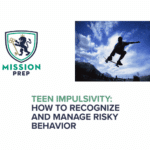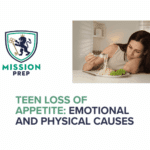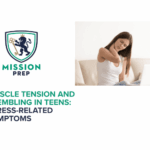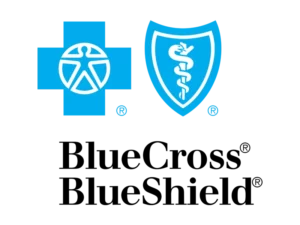Controlling Behavior in Teens: Recognizing Causes and How to Help

Sometimes it is hard to find the balance between fostering independence in teens and allowing them to take too much control. Adolescence is a time to learn about your capabilities, strengths, weaknesses, and boundaries. Therefore, your child might test their independence by engaging in controlling behaviors.
While some controlling behaviors are a natural part of growing up, if domineering or manipulative behaviors become the “go-to,” they can be detrimental to teens and those around them.
If you’re concerned about teen controlling behavior, a mental health professional can highlight whether it’s a cause for concern and ways to cope. This page can also help you better understand patterns of controlling behavior in adolescents by exploring:
- Causes of controlling actions in adolescents
- Recognizing behavioral patterns of unhealthy control
- Mental health issues tied to control
- Therapy for behavioral issues
- Where to find professional support
- Frequently asked questions about teen controlling behavior
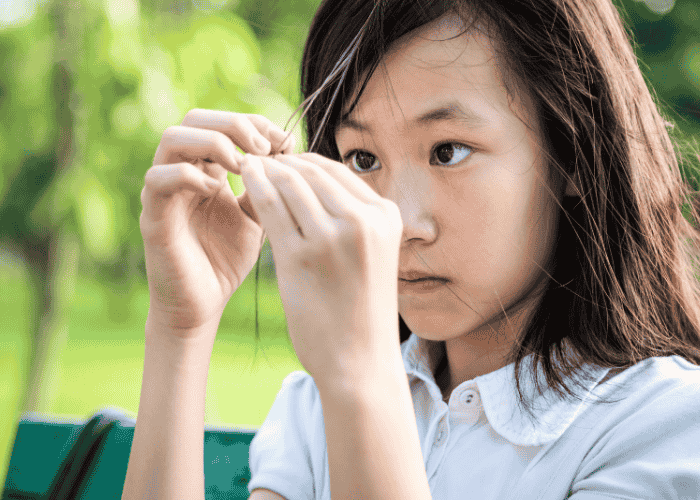
Causes of Controlling Actions in Adolescents
There’s no singular cause of controlling actions in adolescents. Several factors could predispose a teen to act in this way, including biological contributors, cognitive and learning styles, and parenting practices.1 We discuss each of these potential contributors below.
Biological Factors and Controlling Behavior
Certain developmental and behavioral conditions have been linked to controlling actions, such as attention-deficit hyperactivity disorder (ADHD), oppositional defiant disorder (ODD), and conduct disorder (CD).2
Research shows that ADHD, ODD, and CD are polygenic, meaning that there are multiple genes involved in the development of these disorders. The genes involved are thought to be linked to temperament, personality, and behavioral inhibition2.
Cognitive and Learning Deficits
Cognitive functioning and social learning processes in children could also predispose them to developing behavioral issues later in life.3 For example, studies show that reduced sensitivity to punishment and reward, as well as deficiencies in inhibition and decision making, are linked to ODD and CD in adolescents.3
When a child doesn’t react appropriately to punishment, they may fail to learn the severity of the consequences of their actions. Likewise, when behavioral inhibition is impaired, adolescents might struggle to control urges to act out in maladaptive ways, possibly leading to increased manipulative and controlling behavior.
Parenting Styles and Disruptive Behavior in Adolescence
Parenting styles could also play a role in teen controlling behavior. Three dimensions of parenting were identified that typically impact a child’s behavior. These are:4
Affection: Responsiveness to the child, involvement in their life, and providing support- Behavioral control: Using strict discipline to control a child’s behavior, including setting limits and overly monitoring behavior
- Psychological control: Controlling a child’s emotions and behavior using psychological methods, like inducing guilt or withholding love
To put it simply, based on these findings, parental behavioral control may be the style most associated with teen controlling behaviors.
Recognizing Behavioral Patterns of Unhealthy Control
Some behavioral patterns involving unhealthy control include:5
Arguing a lot with peers, family, teachers, and other authoritative figures- Being disobedient at school or at home
- Threatening or manipulating people to get what they want
- Lying and cheating to get ahead
- Belonging to a group of friends that also shows controlling behavior
Mental Health Issues Tied to Control
Attention Deficit Hyperactivity Disorder (ADHD)
Many of the behavioral difficulties experienced with ADHD can impact an adolescent’s behavior at school and in the home.6 Restlessness and hyperactivity are two common childhood symptoms, whereas inattention issues tend to develop in adolescence. Additionally, teenagers with ADHD may show deficits in executive functioning and self-regulation.6
Social interactions can also be impacted due to lower frustration tolerance and ineffective interpersonal skills. Therefore, teen controlling behavior may arise when social interactions are impaired. Further, some adolescents with ADHD may withdraw from others or begin to show depressive symptoms after getting negative feedback related to their problem behaviors in relationships.6
Oppositional Defiant Disorder (ODD)
Children and adolescents diagnosed with ODD typically show signs of antisocial behavior. For instance, a major sign of ODD is defiance towards authority figures, such as parents or teachers.7
Teens with ODD may also show impairments in social and emotional processing as well as decision-making abilities. Because of these issues, adolescents with ODD could show more signs of aggression in relationships, including controlling behaviors.7
Conduct Disorder (CD)
Conduct disorder is considered more severe than ODD based on how the symptoms present.7 CD is also associated with neuropsychological impairments that typically negatively impact a child’s social interactions. For instance, due to problems regulating their emotions and controlling their behavior, adolescents with CD may struggle to maintain friendships and other close relationships.7
Another core feature of CD is a lack of empathy, which further impacts social interactions.7,8 As a result, showing controlling and manipulative behavior is common in CD.
Additionally, one of the scales used to measure CD behaviors includes specifiers for grandiose-manipulative (GM), callous-unemotional (CU), daring-impulsive (DI) traits, and other conduct disorder symptoms (CD).8
As there are mental health concerns tied to controlling and manipulative behavior in adolescence, it’s important that parents understand how to intervene early.
Therapy for Behavioral Issues in Teens
Functional Family Therapy (FFT)
There are three overarching goals that FFT uses to be an effective treatment program for adolescent behavioral problems. These are:10
Changing the problem behaviors in adolescents and families by replacing maladaptive coping skills with adaptive ones- Reducing the negative consequences of the disruptive behaviors by understanding how a child’s behavior influences family, friends, and the greater society
- Providing this care at a lower cost in terms of both time and money to ensure that this therapy is accessible to all who need it
The basic structure of FFT is a 90-day intensive program that can take place in clinical settings, schools, or at home.10 The therapists delivering the program work on five objectives: engagement, motivation, assessment, behavior change, and generalization. To change behaviors, therapists teach positive communication skills as well as emotion regulation and cognitive skills.10
Multidimensional Family Therapy (MDFT)
In MDFT, the therapist focuses on the problems, strengths, and goals of the adolescent, as well as addressing parent issues, family relationships, and influences outside of the family.11
Some of the behavioral interventions used for teens are relationship building, academic planning, and discussing friendship choices and consequences. MDFT may also involve taking part in positive extracurricular activities, learning how to say “no” to drugs, and controlling anger and impulses.11 These approaches are effective for promoting healthy relationships and developing better emotion regulation skills.
Multisystemic Therapy (MST)
When taking part in MST, the entire family interacts with the therapist to develop better communication skills, promote empathy, identify each person’s strengths, and reframe negative thought patterns.12
MST is particularly effective in treating CD in adolescents. This is because it focuses on both changing the problem behaviors and creating a better environment so that the adolescent is less likely to engage in controlling behaviors in the future.12
Although treating behavioral issues in adolescents can be challenging, there are many forms of effective therapy available. The three therapeutic interventions discussed above do not capture all of the possibilities. Reaching out to a trained mental health provider is encouraged for accessing the most suitable approach for your child’s needs.

Mission Prep: Supporting Teen Wellness and Social Skills
At Mission Prep, we understand how overwhelming it can be to navigate all of the treatment options for teen controlling behavior. We’re here to help you better understand the right approaches for your child and family’s needs.
Whether your child requires outpatient therapy or more intensive residential mental health treatment, our team can guide you through the process of getting your child the help they need. The client-therapist relationship is always at the heart of our practices, so your child can take comfort in the fact that they will be treated with respect and compassion.
Contact Mission Prep today to speak to a qualified clinician who can direct you and your family toward the best option for your situation. Your child and family deserve positive relationships and mental well-being.
References
- Frick, P. J., & McMahon, R. J. (2008). Child and adolescent conduct problems. In J. Hunsley & E. J. Mash (Eds.), A guide to assessments that work (pp. 41–66). Oxford University Press. https://doi.org/10.1093/med:psych/9780195310641.003.0003
- Azeredo, A., Moreira, D., & Barbosa, F. (2018). ADHD, CD, and ODD: Systematic review of genetic and environmental risk factors. Research in developmental disabilities, 82, 10-19. https://doi.org/10.1016/j.ridd.2017.12.010
- Matthys, W., Vanderschuren, L. J., Schutter, D. J., & Lochman, J. E. (2012). Impaired neurocognitive functions affect social learning processes in oppositional defiant disorder and conduct disorder: Implications for interventions. Clinical child and family psychology review, 15(3), 234-246. DOI 10.1007/s10567-012-0118-7
- Aunola, K., & Nurmi, J. E. (2005). The role of parenting styles in children’s problem behavior. Child development, 76(6), 1144-1159. https://doi.org/10.1111/j.1467-8624.2005.00840.x-i1
- Lehto-Salo, P., Närhi, V., Ahonen, T., & Marttunen, M. (2009). Psychiatric comorbidity more common among adolescent females with CD/ODD than among males. Nordic journal of psychiatry, 63(4), 308-315. DOI 10.1007/s00787-011-0175-3
- Krauss, A., & Schellenberg, C. (2022). ADHD symptoms and health-related quality of life of adolescents and young adults. European Journal of Health Psychology. https://doi.org/10.1027/2512-8442/a000104
- Mazza, M., Lisci, F. M., Marzo, E. M., De Masi, V., Abate, F., & Marano, G. (2025). Why do they do it? The psychology behind antisocial behavior in children and adolescents. Pediatric Reports, 17(2), 26. https://doi.org/10.3390/pediatric17020026
- Neumann, C. S., Salekin, R. T., Commerce, E., Charles, N. E., Barry, C. T., Mendez, B., & Hare, R. D. (2024). Proposed specifiers for conduct disorder (PSCD) scale: A latent profile analysis with At-Risk adolescents. Research on Child and Adolescent Psychopathology, 52(3), 369-383. https://doi.org/10.1007/s10802-023-01126-0
- Sheidow, A. J., McCart, M. R., & Drazdowski, T. K. (2022). Family‐based treatments for disruptive behavior problems in children and adolescents: An updated review of rigorous studies (2014–April 2020). Journal of marital and family therapy, 48(1), 56-82. https://doi.org/10.1111/JMFT.12567
- Littell, J. H., Pigott, T. D., Nilsen, K. H., Roberts, J., & Labrum, T. K. (2023). Functional family therapy for families of youth (age 11–18) with behaviour problems: A systematic review and meta‐analysis. Campbell systematic reviews, 19(3), e1324. 10.1002/cl2.1324
- Hogue, A., Dauber, S., Samuolis, J., & Liddle, H. A. (2006). Treatment techniques and outcomes in multidimensional family therapy for adolescent behavior problems. Journal of Family Psychology, 20(4), 535–543. https://doi.org/10.1037/0893-3200.20.4.535
- Henggeler, S. W. (2012). Multisystemic therapy: Clinical foundations and research outcomes. Psychosocial Intervention, 21(2), 181-193. http://dx.doi.org/10.5093/in2012a12

